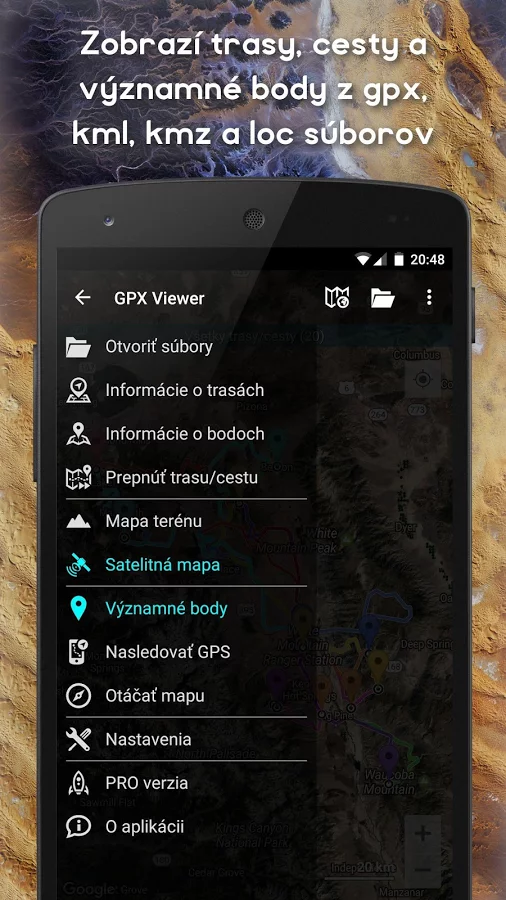
- #Gpx viewer classes code
- #Gpx viewer classes license
- #Gpx viewer classes series
- #Gpx viewer classes free
actual graphic image of the printed chart (called RNC, for raster navigation chart) rather than on a vector chart (called ENC, for electronic navigation chart). If I might insert here an easily defendable bias, the electronic route layout is usually best done with a “real e-chart,” i.e.

Then, when your final list of waypoints is made and checked, you can transfer the list to your onboard navigation system using methods we discuss here.
#Gpx viewer classes free
These programs (including many free or open source versions) have better graphics and view options than any dedicated onboard system, not to mention that many show tides and currents as a function of time to help plan the route. The easiest way to lay out a route is to select and then fine tune the waypoints on an e-chart program on your computer rather than enter them directly into the onboard GPS. There are many reasons these days to transfer navigation data among GPS and e-chart devices. I haven't done any work on it for a while, so I'm glad to hear it could be useful to someone.Your best bet for nav data transfer (published November 2012)

#Gpx viewer classes code
Hi Quique, please feel free to make use of the code here.
#Gpx viewer classes license
Can I do that? What license or conditions will apply? Thanks. Hi, I want to use your gpx parser (probably modified) in a personal project. Give me a shout if you have any problems getting it to run OK. Hi Juan, I've uploaded all the code here. Hi, I wonder if you could show me the code of the journeyPoint class.that would be very useful.Thanxs a lot! Once the gpsParser class has built it, it is passed to the chartPanel class for display. This ArrayList forms the internal model that our Java application uses to represent a recorded route. I use a simple stack to record the element we're currently reading, and the points of the GPX route are saved as an ArrayList of journeyPoint instances. So our characters() method just has to concatenate all the chunks of text, and the endElement() method will then process that text. This means that we won't know that we have read all the text until we hit the end of the XML element - which we deal with in the endElement() method. Text nodes can be handled by overriding the characters() method, however a single text node may call this multiple times, once for each chunk of text. Reading the two text nodes is not so simple. Reading attributes is straightforward - we can do it in the startElement() function which SAX fires each time the start of an XML element is encountered. Each of these requires a different approach in our Java code. So in order for us to record all the data for a point, we first need to read the attributes of the element, and then the text data of its two child elements. The element records the elevation in metres, and the other is obvious. 155.390259 2008 - 12 -15T15 : 56 :02Z Each of these elements records a GPS position using attributes specifying the latitude and longitude, and two child elements, and, which each contain a string (in XML parlance a "child text node") representing the data value recorded at that point.
#Gpx viewer classes series
They record track data as a series of elements: Take a look at the GPS files which we're parsing here.

This is what makes it so lightweight and fast, however it also means it isn't always intuitive to work with. If we want to know where we are in the document tree, we need to record our position ourselves. The XML document is read one time, and is not stored in memory. DefaultHandler The SAX model is effectively a stateless XML parser. Import java.io.* import import import .* public class gpxParser extends org. To implement a SAX parser like this, you create a class which extends .DefaultHandler, and in this class you override functions of DefaultHandler in order to handle various events which are fired as the XML document is read element-by-element: Here is the gpxParser class which parses the source XML using an event-driven SAX model. This sounds great, can you put an example code for me? thx!Ĭompton 10:28 pm, Tuesday, 17 February 09 This array list is then passed over to the JPanel, which iterates through them when rendering the route, and also when checking for 'mouseovers' (the point under the mouse is selected, as shown in orange on the route graphic). There are 600 to 4000 points in a file, and as it walks through the XML tree gpxParser reads each one into an ArrayList. Exit is obvious, and Open calls the gpxParser class to read a XML document via SAX. The JFrame also has a menu bar, with only two options at present: Open and Exit. When the JFrame fires up, it sets the JPanel to visible. There are three primary classes - quickChart which extends JFrame, chartPanel which extends JPanel, and gpxParser which extends .DefaultHandler.


 0 kommentar(er)
0 kommentar(er)
